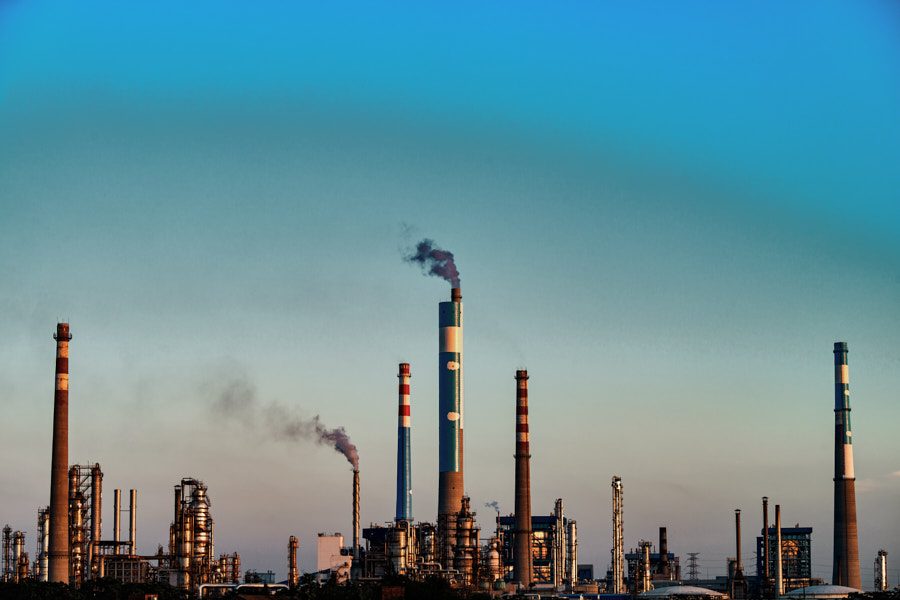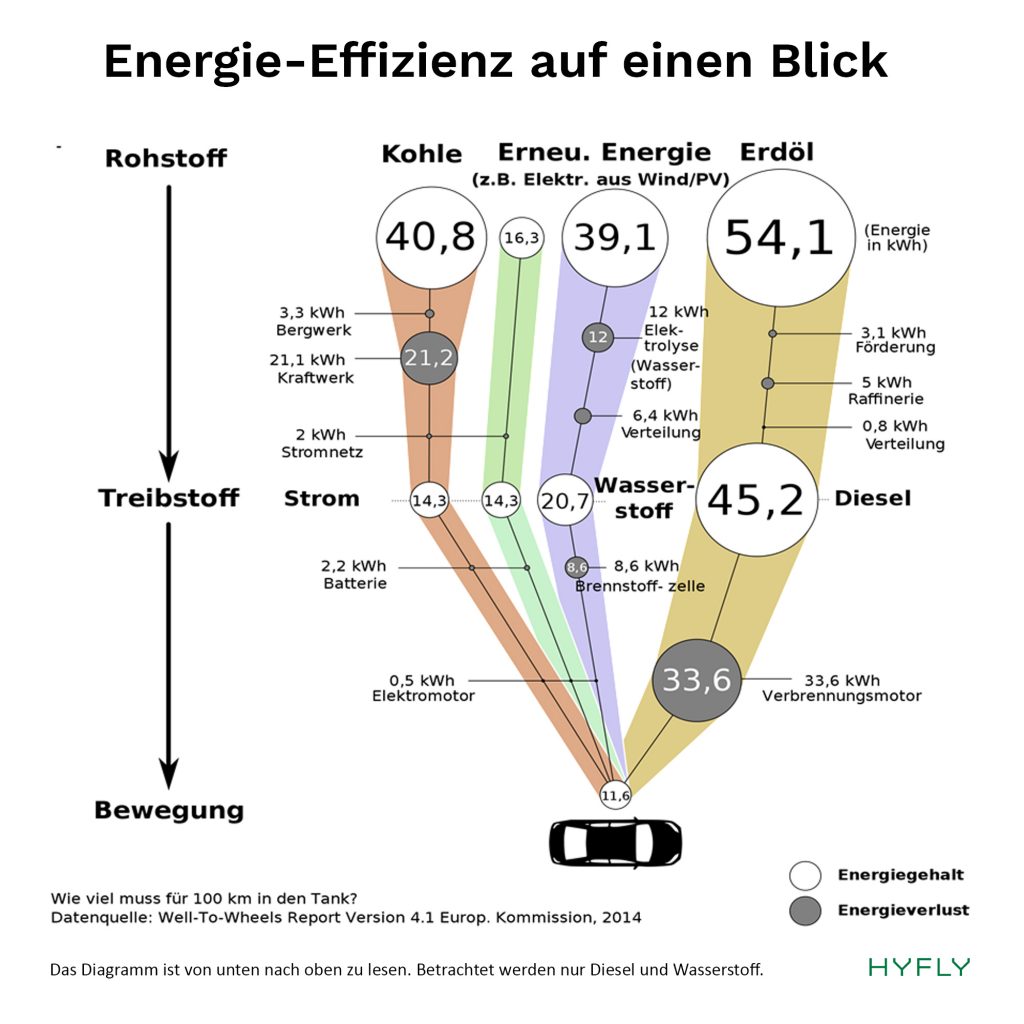
Our environment gives us a variety of resources. Some like oil and gas are finite. Others like sun, wind, water and air are almost unlimited. The efficiency with which we use these resources is decisive for our energy balance. While combustion drives from the oil source to the drive shaft only use around 20% of the energy and electric drives with battery storage and electricity from fossil fuels achieve an efficiency of around 30%, hydrogen fuel cell systems enable an overall efficiency of 40%.
The following graphic of our HYFLY cooperation platform shows how much more efficient hydrogen is:

Unlike fossil fuels, hydrogen enables the storage of renewable energy. That means: If hydrogen is generated with green electricity from wind, water and solar energy, this naturally generated energy can be stored and transported as desired.
During electrolysis, water is split into hydrogen and oxygen with the help of electricity. With a good electrolyzer, 70% of the energy used can be conserved. Electrolysis is possible on a large industrial scale, but also locally and decentrally.
Put pressure on change
Hydrogen is a gas with an energy content of 33 kWh per kg. At normal pressure, one kilogram of hydrogen takes up a volume of approx. 11,000 liters. If it is compressed and stored under high pressure, the space requirement is significantly lower (at 700 bar only 25 liters). When the gas is withdrawn from the pressure tank, it is decompressed again without loss and fed into the fuel cell system.
A further reduction in volume could only be achieved through liquefaction. To do this, however, the hydrogen has to be cooled to below minus 253 ° C with great technical and energetic effort.
When we were considering the design of PS-HyTech HySphere, the focus was on the lowest possible dead weight and the waiver of cooling and liquefaction in order to avoid additional energy consumption. The result is a spherical hydrogen pressure tank made of carbon fiber composite material.
Less weight for more payload and range:
The high energy content of hydrogen and the possibility of pressure storage ensure that hydrogen systems are significantly lighter than battery systems in terms of weight.
A state-of-the-art lithium battery has an energy content of approx. 0.25 kWh / kg. A cylindrical 700 bar pressure tank with hydrogen comes to approx. 2 kWh / kg. PS-HySphere achieves approx. 5.5 kWh / kg. This means that the energy storage density of PS-HySphere is over 20 times higher than that of batteries.
In mobile applications, the higher weight of conventional batteries has a negative impact on the range and payload. You can get ahead with hydrogen.
While batteries have a comparatively short shelf life (number of charge / discharge cycles) and are prone to high and low temperatures, fuel cell systems are much more robust. They also do not have a memory effect and do not have to be heated in extremely cold temperatures, as is required for lithium batteries, for example.
What would a modern car tire cost today if only 1,000 were produced worldwide?
Basic hydrogen technology has been researched for over 100 years. The industrial series production of some components that are used in hydrogen-based technical solutions is still in its infancy. These components are designed and tested with great effort and are currently still produced and sold in very small quantities. They are therefore comparatively expensive. The availability and easy access to hydrogen, for example for refueling, is still a shortcoming in many places.
All of this means that hydrogen-based energy solutions can already pay off compared to conventional energy sources. Hydrogen technologies now offer an excellent launch pad for innovative companies that see their future in the context of crowd energy, logistics and mobility applications.
Is hydrogen used like oil?
No. In our solutions, hydrogen generates electricity in a fuel cell. Electric motors, for example, are operated with this electricity.
Green Hydrogen:
Green, gray, blue and turquoise hydrogen are frequently reported. The hydrogen itself is always the same. The colors indicate the process with which the hydrogen is produced: “Green” means that the energy comes from solar, water or wind energy. The other colors indicate traditional, unsustainable or non-CO2-neutral processes.
Energy content of hydrogen:
33 kWh per kg
Energy content of diesel:
11 kWh per kg
Efficiency source to drive shaft:
Hydrogen fuel cells: 40%
Batteries: 30%
Fossil fuels (oil): 20%
Energy storage:
Good electrolysers secure around 70% of the energy used from sustainable sources.
Compressed storage:
The volume of 1 kg of hydrogen is 11,000 liters. At 700 bar pressure it becomes 25 liters.
